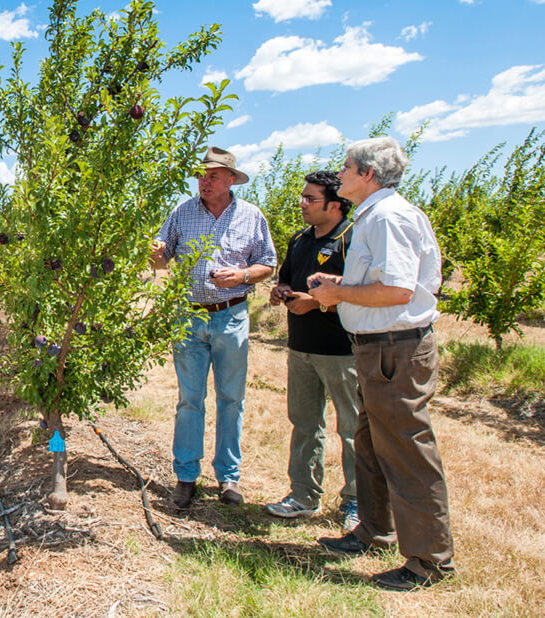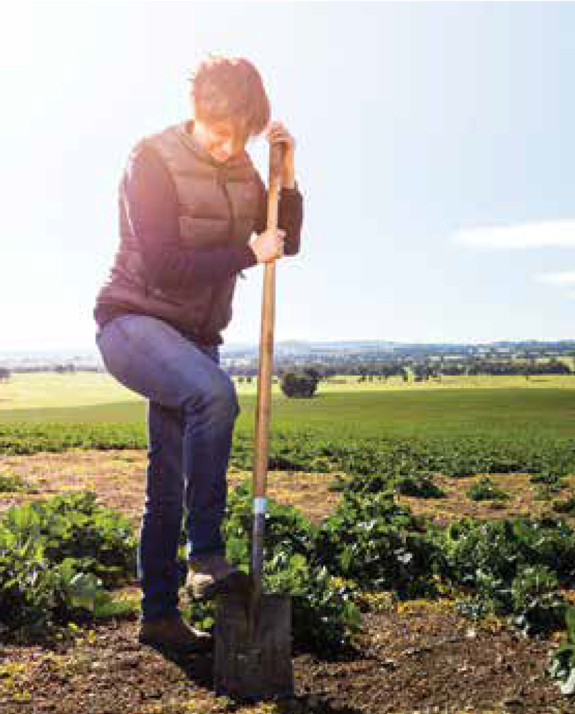Key Points
- Soil management innovations must be created and applied with recognition of the complex social and cultural systems in which they will function to have lasting impact.
- ‘Adoptability’ of innovations relates to characteristics of:
- – the innovation itself
- – the producer and their social and cultural environment
- – the knowledge and power relations that frame how the innovation is developed and promoted.
- Each of these characteristics can be considered as criteria that, if addressed or understood, lead to an increased chance of the innovation being adopted.
- A simple table of criteria is provided to assist soil and agricultural researchers develop innovations that will be adopted and have impact.
Our Research
Much research and development effort is directed towards innovative tools, technologies and practices for improved soil stewardship and performance. Despite their manifold benefits, often these innovations are not embraced by farmers – they are not ‘adopted’.
Aspects of adoption and adoptability were considered as part of a larger social scoping study undertaken in 2018. This involved undertaking a desktop review of the current published understanding of adoption and adoptability. Thematic analysis of the reviewed material enabled the construction of a table, reproduced in this Fact Sheet, which focuses on the key drivers and influences on adoption of a soil- related innovation, and on the criteria that need to be met for an innovation or practice to be adoptable.
The Challenge
For innovative approaches, practices, tools and technologies to be adopted, the innovations must be developed and used with an understanding of the dynamic, complex social and cultural systems of which they are part. Good science is necessary, but not sufficient, for strong uptake of innovations. Scientists have little information to help them understand the other aspects that also need to be considered.
The Opportunity
The Soil CRC provides the opportunity for soil scientists to work with social scientists and farmers, enabling a broad approach to developing innovations with increased probabilities of adoption.
Research Findings
Three broad approaches to adoption were identified as starting points for the analysis of adoption and adoptability. The most traditional ‘top-down’ approach positions the innovations developed by scientists as something developed in isolation, then promoted and eventually adopted by producers. The ‘bottom- up’ approach invites people involved in research, development and extension to explore the lives and worlds of the intended ‘end-users’, and shape their research to the needs of those end users.
The ‘co-production’ model moves to embed the ideas of technological and practice change within broader and longer contexts. When aspects of these approaches are considered together they highlight a number of conditions or criteria that must be met for an innovation, practice or set of practices to be adoptable.
Taking these criteria into account is crucial for researchers and extension professionals if they are to understand adoptability and adoption of technologies and/or practices for improving soil performance.
The table of conditions and criteria for adoption and adoptability is presented as a framework to guide thinking about specific innovations as they are being developed and promoted. It should be taken as a prompt for reflection and action, rather than as a definitive set of rules.
Conditions Or Criteria That Need To Be Met For An Innovation, Practice Or Set Of Practices To Be Adoptable
Characteristics of the innovation
| Key Adoption Drivers | Conditions or Criteria that need to be met for an Innovation to be Adoptable |
|---|---|
| Relative advantage | The innovation shows strong likelihood of: • Reducing short-term costs, and increasing yields and/or output prices • Reducing or having no net impact on business risks |
| Compatibility | The innovation is largely compatible with producers’ existing approaches, farming methods, and machinery, and the overall farming system. |
| Complexity | The innovation is relatively straightforward to understand. Technical assistance is readily available to assist the producer in implementing the innovation and making it workable on-farm. |
| Observability | The results and benefits of the innovation are visible and can be observed distinctly from other practices. |
| Trialability | The innovation can be adapted, changed or modified by the producer to a certain extent so that it is more easily integrated into the existing farming system. |
Characteristics of the producer and their socio-cultural context
| Key Adoption Drivers | Conditions or Criteria that need to be met for an Innovation to be Adoptable |
|---|---|
| Producer goals and values | The innovation is consistent with producers’ financial, environmental, conservation, family and lifestyle values and goals. |
| Social networks | The innovation is compatible with accepted ideas, knowledge and sources of advice within producers’ broader social networks. |
| Producers’ local knowledge | The innovation allows for the integration of producers’ existing local knowledge and expertise. |
| Personal circumstances | The innovation is consistent with producers’ family and financial circumstances. |
| Trust | The innovation, and those who develop and promote it, are viewed by producers as credible and trustworthy. |
| Cultural norms on ‘good’ farming | The innovation is consistent with local norms and accepted cultural scripts on what constitutes ‘good’ farming and being a ‘good’ farmer. |
Characteristics of the knowledge and power relations that frame how the innovation is developed and promoted
| Key Adoption Drivers | Conditions or Criteria that need to be met for an Innovation to be Adoptable |
|---|---|
| Legitimate process | Innovations are co-produced through appropriate engagement among stakeholders (e.g., scientists, government and or industry representatives and end users and landholders). |
| Technological lock-in | The innovation being promoted does not undermine producer autonomy and flexibility or lock them into practices or technological packages that are difficult to dis-adopt. |
| Transparency | Honesty about funding and commitments and aims of different stakeholders ensures reciprocal benefit through transparency. |
| Risk and uncertainty | Potential risks, uncertainties and externalities (e.g., potential for adverse consequences of adoption) are highlighted in ways that allow producers to evaluate innovations and learn accordingly. |
| Institutional design | Governance of projects are set up to ensure an appropriate balance between accountability and efficiency. |


Project Team and Fact Sheet Authors
Catherine Allan (Charles Sturt University)
Luke Beange (NSW Department of Primary Industries)
Rui Bi (Charles Sturt University)
Geoff Cockfield (University of Southern Queensland)
Peter Dalhaus (Federation University)
Sophia Duan (Charles Sturt University)
David Falepau (Charles Sturt University)
John Friend (NSW Department of Primary Industries)
Vaughan Higgins (University of Tasmania)
Abigail Jenkins (NSW Department of Primary Industries) Peat Leith (University of Tasmania)
Hanabeth Luke (Southern Cross University) Morgan Miles (Charles Sturt University)
David Minkey (Western Australian No-Till Farmers Association)
Keith Pembleton (University of Southern Queensland)
Kala Saravanamuthu (University of Newcastle)
Vaughan Higgins (University of Tasmania)
Peat Leith (University of Tasmania)
Catherine Allan (Charles Sturt University)
Posted May 28, 2021

